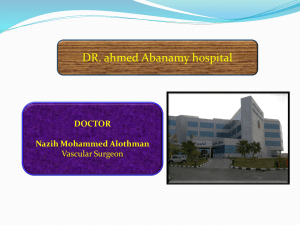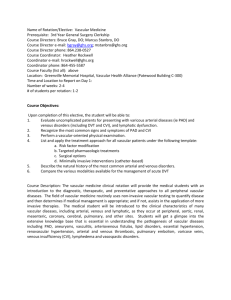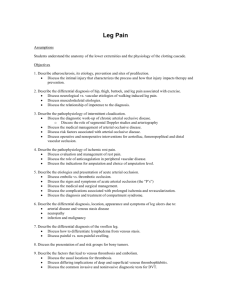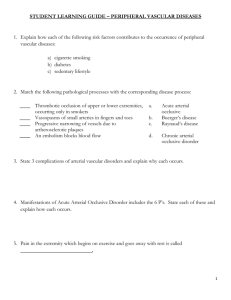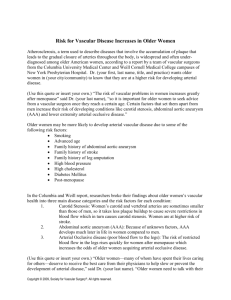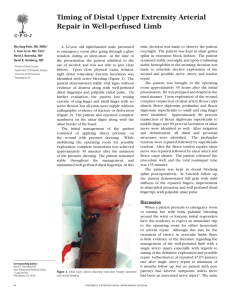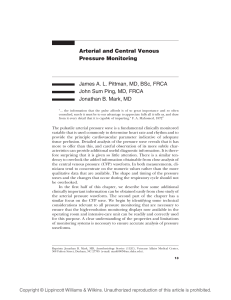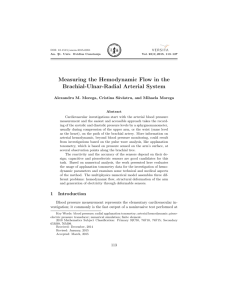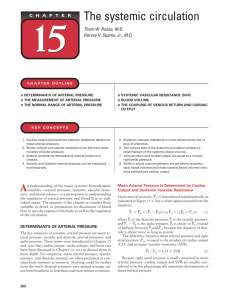Management of Peripheral Vascular Trauma
advertisement
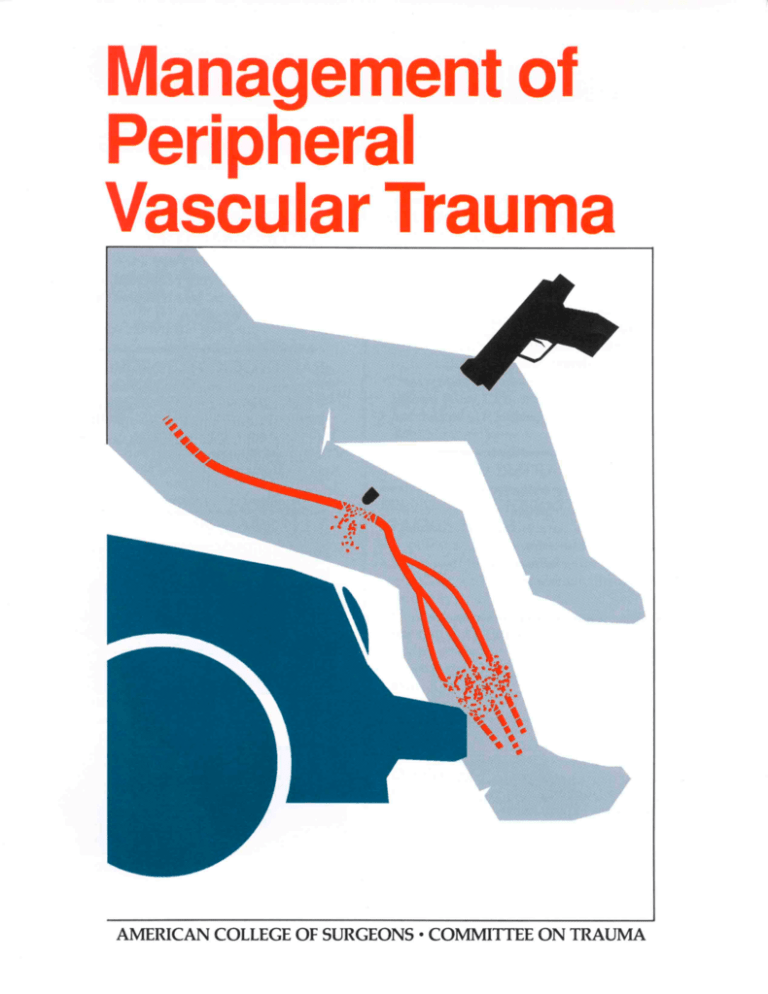
Management of Peripheral Vascular Trauma David V. Feliciano, MD, FACS SUSPICION OF INJURY American College of Surgeons Committee on Trauma Subcommittee on Publications 2002 ROLE OF DIAGNOSTIC STUDIES CAUSES • Penetrating wounds Gunshot, stab, or shotgun IV drug abuse • Blunt trauma Joint displacement Adjacent to major artery Bone fracture Contusion • Invasive procedures Arteriography Cardiac catheterization Balloon angioplasty REASONS FOR DIAGNOSTIC STUDIES • Prevent unnecessary operation • Document presence of surgical lesion • Localize surgical lesion to plan operative approach HARD SIGNS OF ARTERIAL INJURY (Immediate surgery) • External arterial bleeding • Rapidly expanding hematoma • Palpable thrill, audible bruit • Obvious arterial occlusion (pulseless, pallor, paresthesia, pain, paralysis, poikilothermia, especially after reduction of dislocation or realignment of fracture) ARTERIAL LESIONS DOCUMENTED BY ARTERIOGRAPHY } SOFT SIGNS OF ARTERIAL INJURY (Consider arteriogram, serial examination, duplex) • History of arterial bleeding at the scene • Proximity of penetrating wound or blunt trauma to major artery • Diminished unilateral distal pulse • Small nonpulsatile hematoma • Neurologic deficit • Abnormal ankle-brachial pressure index (<0.9) • Abnormal flow-velocity waveform on Doppler ultrasound IMPORTANCE OF PHYSICAL EXAMINATION • Palpable distal pulse, even if diminished, suggests that proximal arterial injury is limited • Serial examinations are mandatory ARTERIOGRAPHY • Can be performed by radiologist using intraarterial digital subtraction angiography or CT angiograph • Can be performed by surgeon in emergency room or operating room Contusion Partial transection Transection Arteriovenous fistula DUPLEX SCAN • Definition: Real-time B-mode (brightness) image and pulsed-wave Doppler image (flow determination) • Duplex scan should be performed by a competent vascular technologist or surgeon MANAGEMENT NONOPERATIVE MANAGEMENT • Appropriate for nonocculsive wall or intimal lesions FINE POINTS IN PERIPHERAL VASCULAR REPAIR • Small vascular clamps or vessel loops • Pass balloon catheters into artery proximal and distal to repair • “Regional” heparin (50 units/mL), 10–15 mL into artery proximal and distal to repair • Completion arteriography • Fasciotomy for compartment pressure >30–35 Hg (suspect compartment syndrome if prolonged period of shock or arterial occlusion, combined arteriovenous injuries, need for arterial or venous ligation, or massive crush or swelling is present) OPTIONS FOR PERIPHERAL VASCULAR REPAIR • Lateral arteriorrhaphy or venorrhaphy • Patch angioplasty • Resection with end-to-end anastomosis • Resection with interposition graft • Bypass graft • Extraanatomic bypass • Ligation ADJUVANT TECHNIQUES FOR LIMB SALVAGE • Intraluminal shunts during orthopaedic stabilization • Extraanatomic bypass around associated soft tissue injury • Intraarterial vasodilators, such as papaverine or tolazoline, to reverse spasm • Intravenous low molecular weight dextran, 500 mL every 12 hours • Thrombolytic therapy with intraarterial tissue plasminogen activator (tPA) by interventional radiologist • Specialized soft tissue coverage of exposed arterial repair using local myocutaneous or free flap SPECIAL CONSIDERATIONS FOR VENOUS REPAIR • Popliteal vein is repaired rather than ligated • Ligation of femoral or iliac vein, if necessary, is usually tolerated if elastic wraps are applied to extremity, which is elevated for 7–10 days • Complex venous repairs (extensive patches, panel grafts, small-sized venous interposition grafts, externally supported PTFE grafts) function as temporary conduits in many patients but often show narrowing or occlusion on later venograms POSTOPERATIVE CARE • Monitor distal arterial pulses by portable Doppler unit • Continue intravenous antibiotics for 24 hours if significant contamination of wound or if interposition graft has been inserted for arterial or venous repair • Consider use of antiplatelet agent for 3 months whenever vein graft or synthetic graft has been inserted (based on laboratory data and data from patients with aortocoronary bypass grafts) This publication is designed to offer information suitable for use by an appropriately trained physician. The information provided is not intended to be comprehensive or to offer a defined standard of care. The user agrees to release and indemnify the American College of Surgeons from claims arising from use of the publication. ©1989 American College of Surgeons
